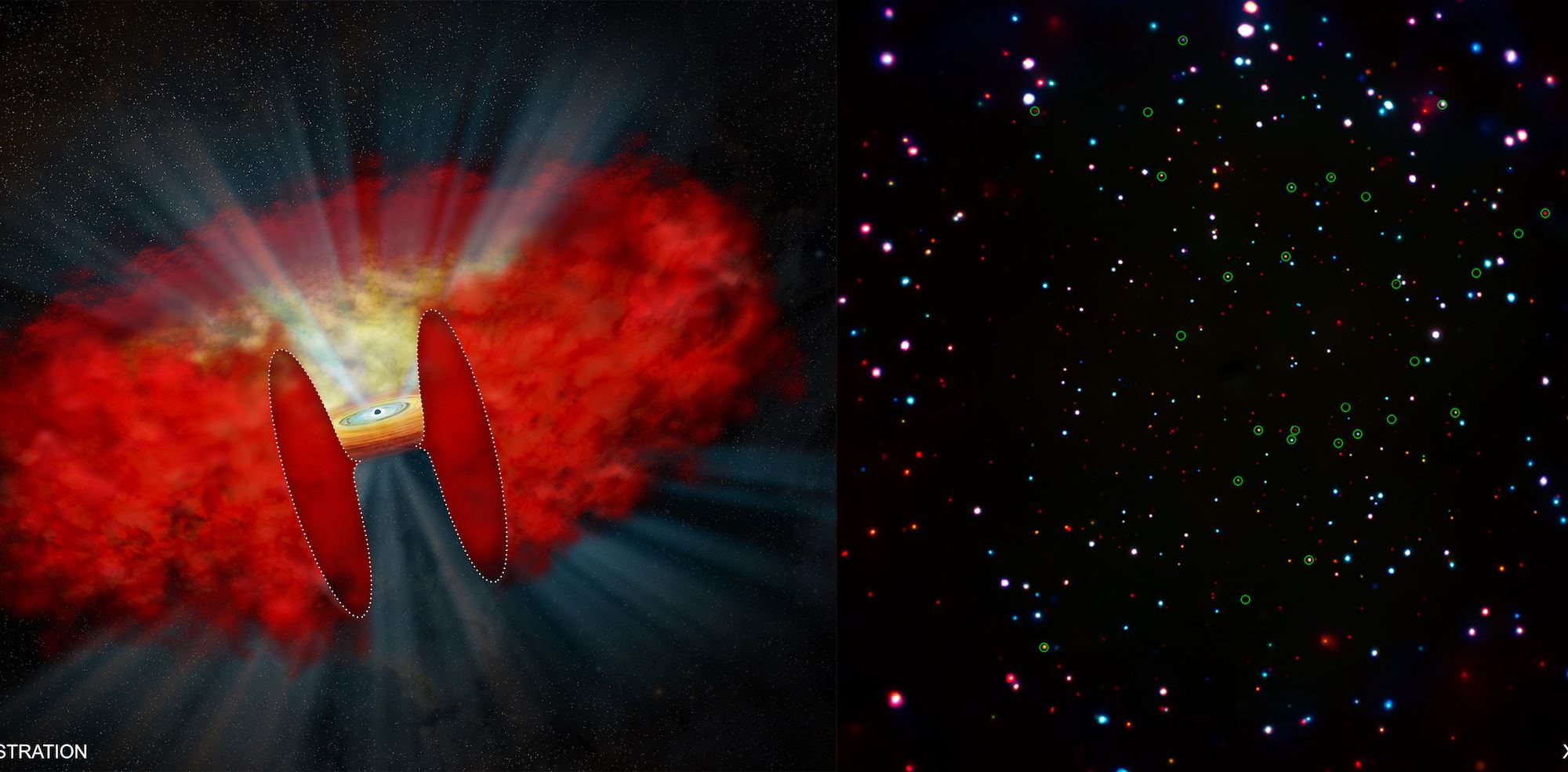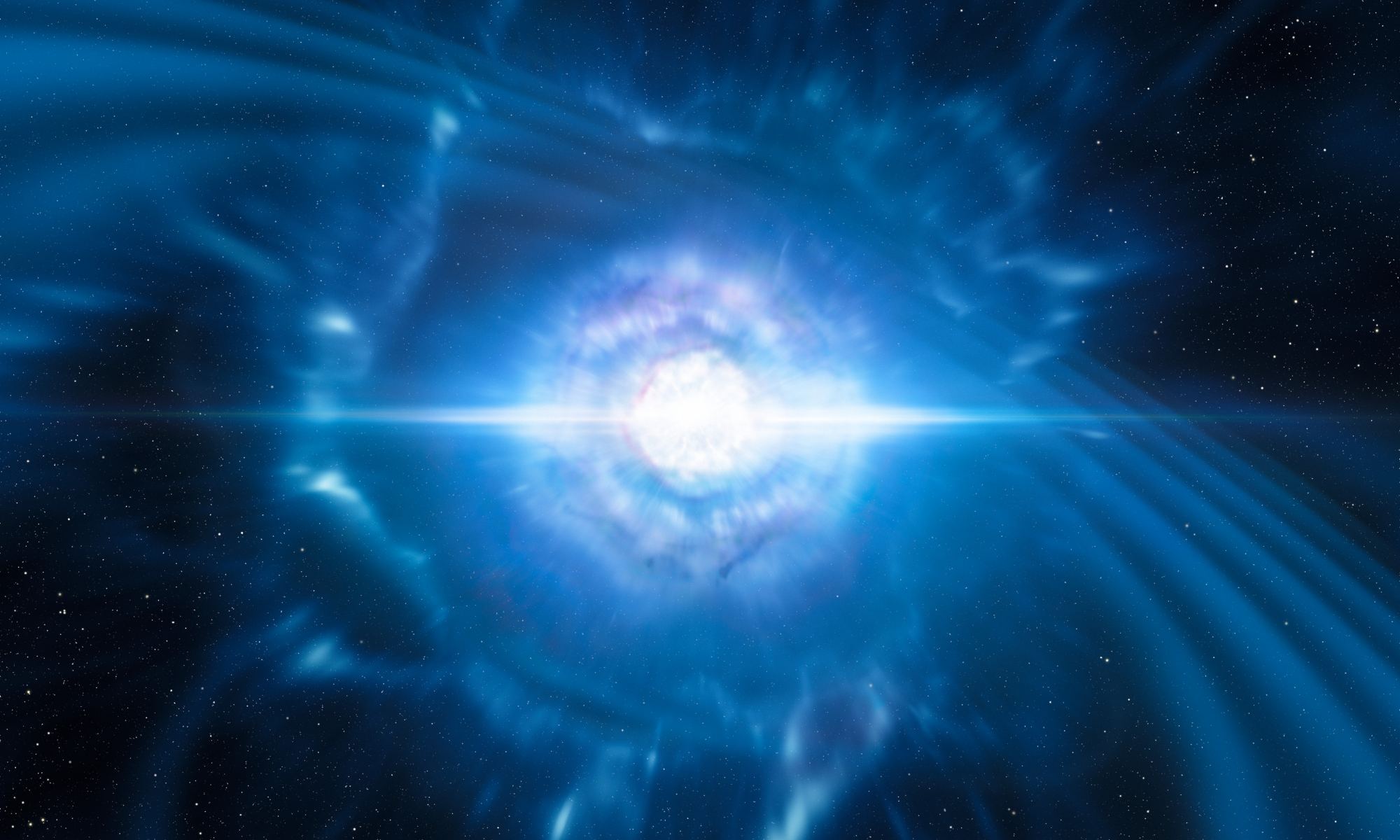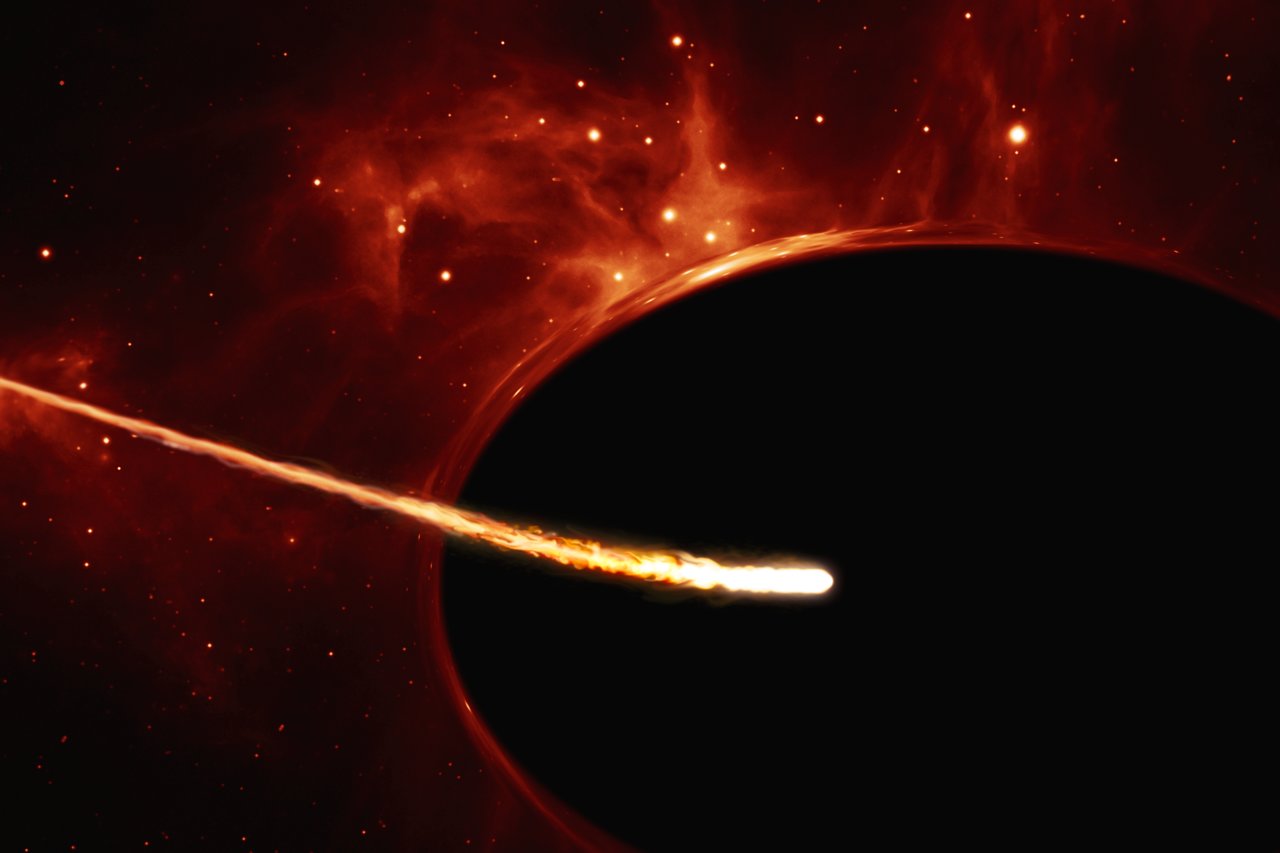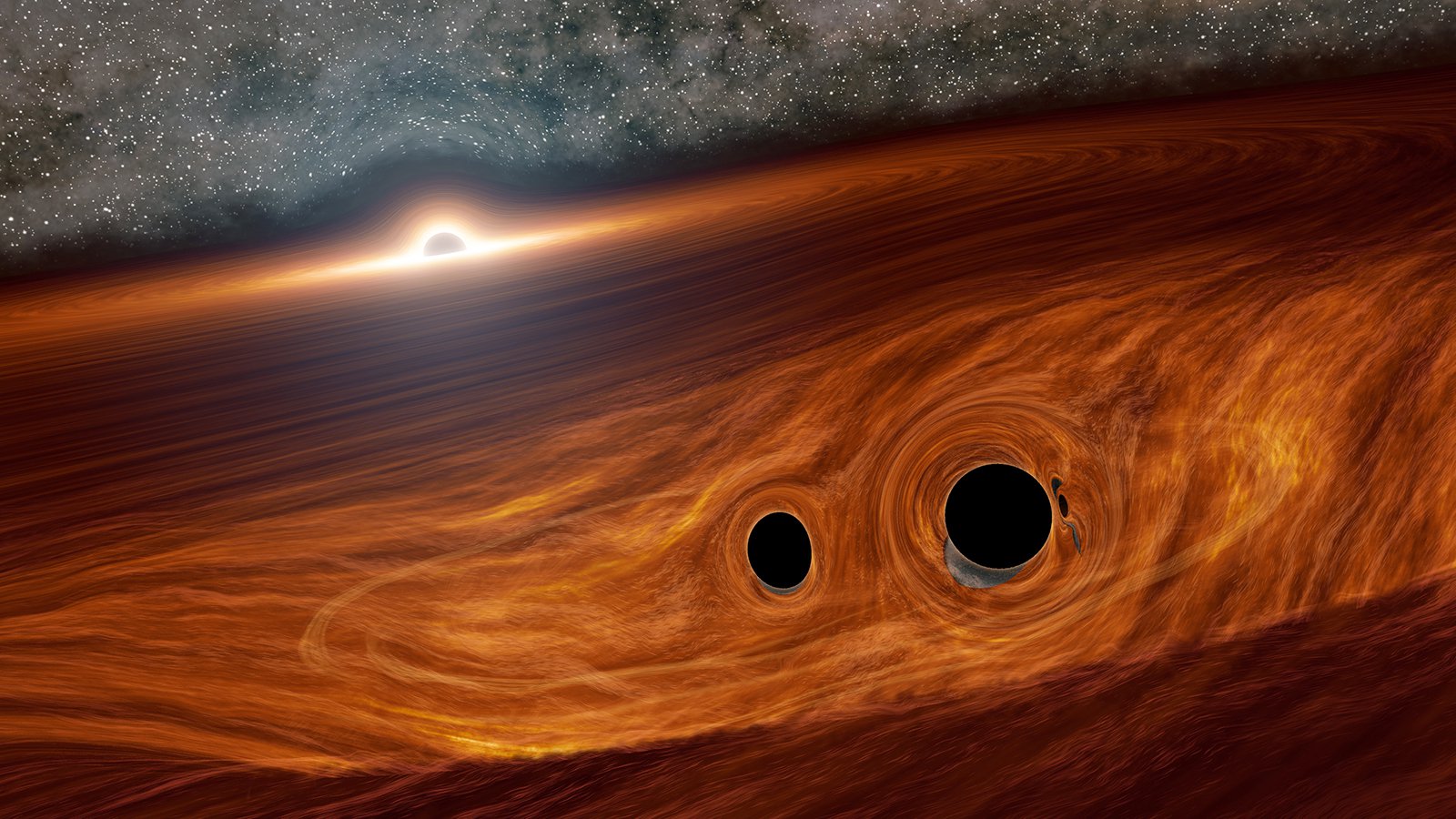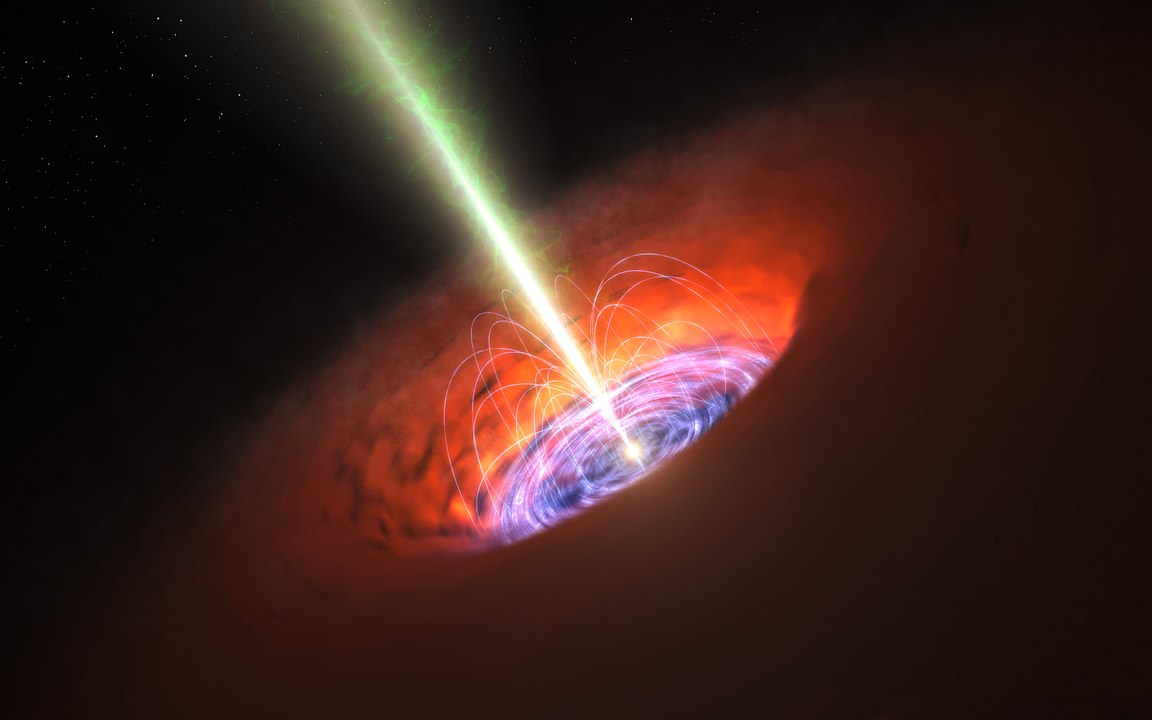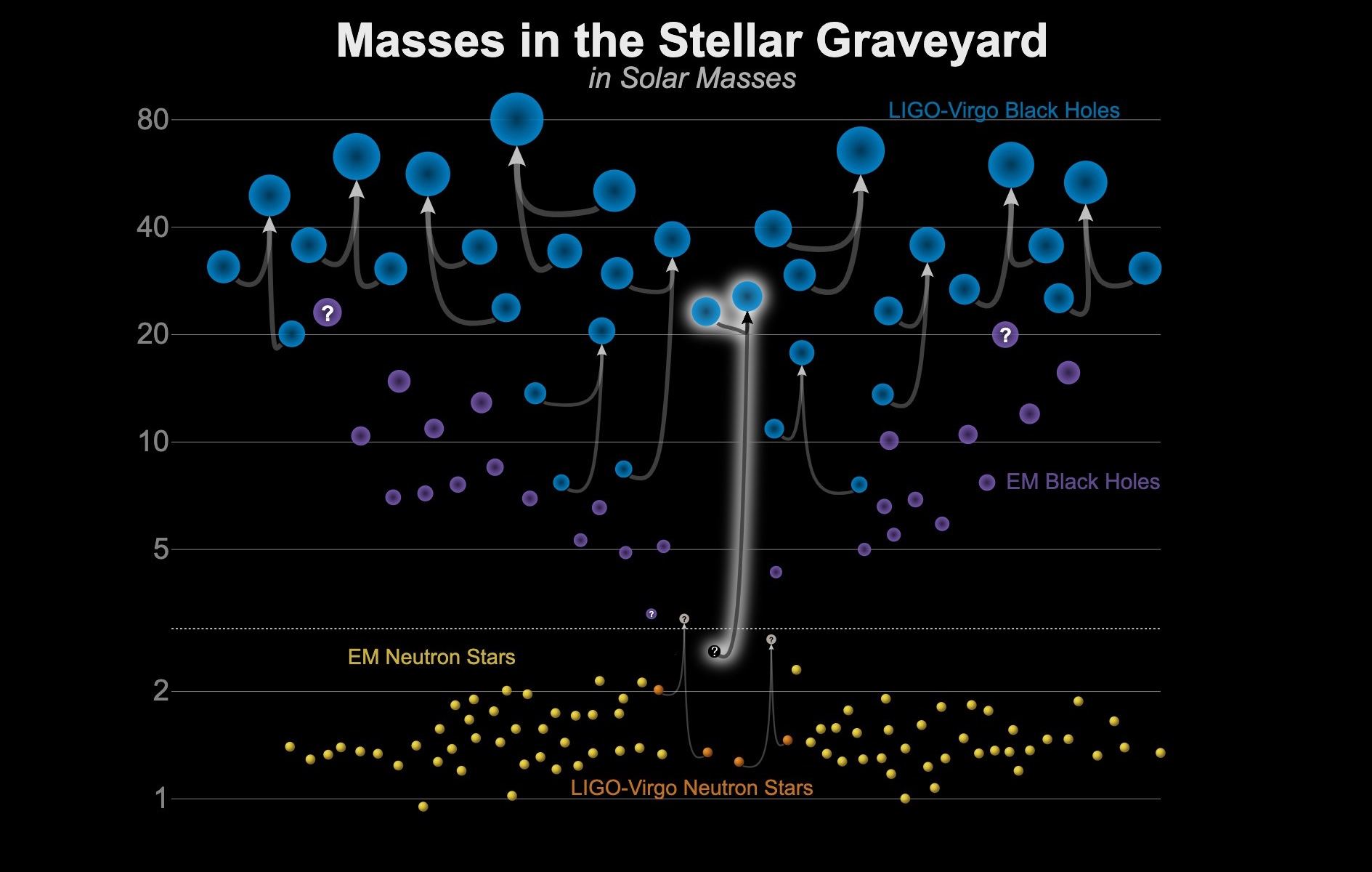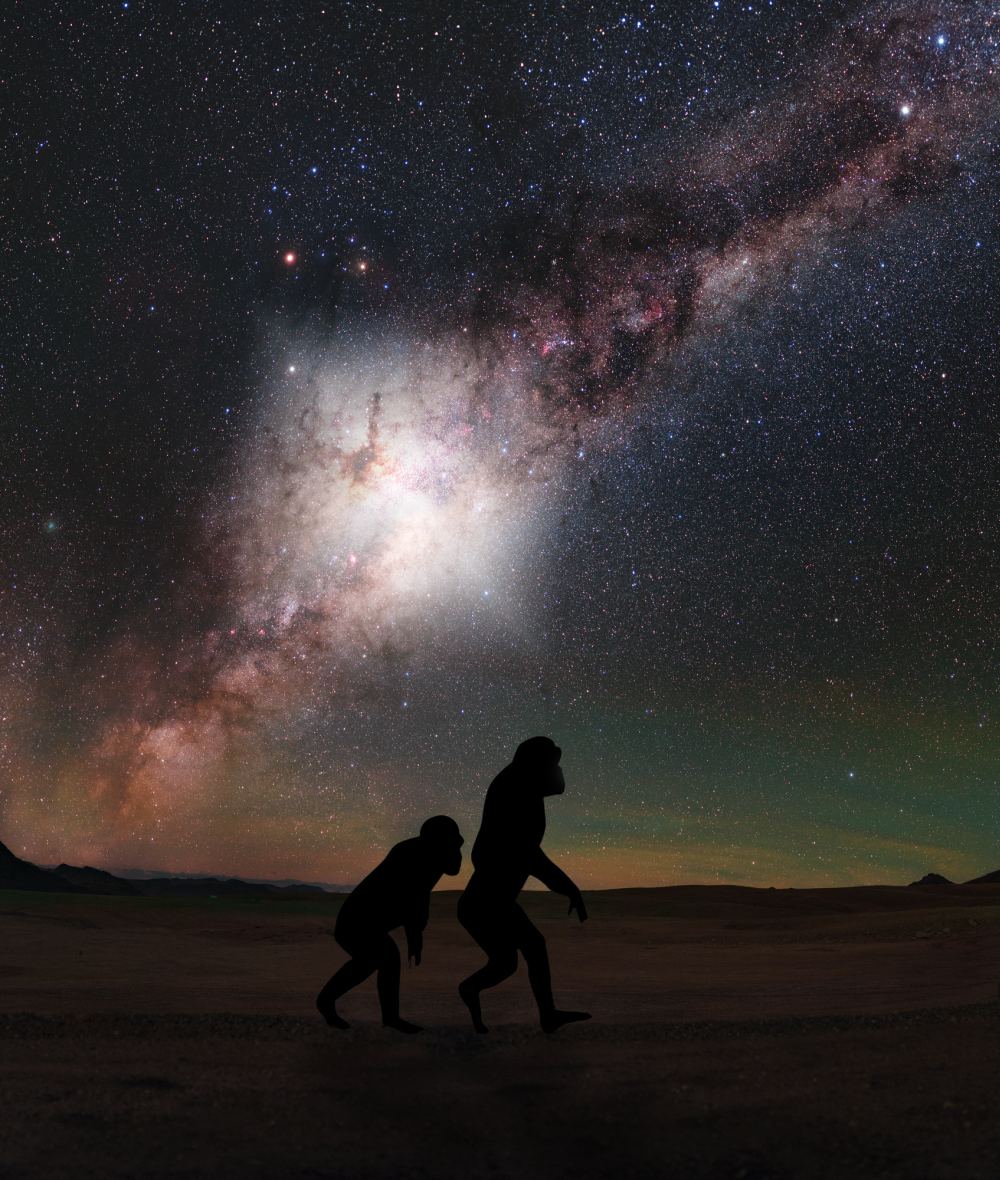In the 1960s, astronomers began theorizing that there might be black holes in the Universe that are so massive – supermassive black holes (SMBHs) – they could power the nuclei of active galaxies (aka. quasars). A decade later, astronomers discovered that an SMBH existed at the center of the Milky Way (Sagittarius A*); and by the 1990s, it became clear that most large galaxies in the Universe are likely to have one.
Since that time, astronomers have been hunting for the largest SMBH they can find in the hopes that they can see just how massive these things can get! And thanks to new research led by astronomers from the Australian National University, the latest undisputed heavy-weight contender has been found! With roughly 34 billion times the mass of our Sun, this SMBH (J2157) is the fastest-growing black hole and largest quasar observed to date.
Continue reading “There’s a Black Hole With 34 Billion Times the Mass of the Sun, Eating Roughly a Star Every Day”
